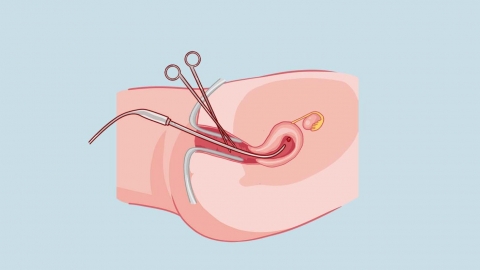What should be noted after a post-abortion curettage?
Generally, "ren liu" refers to induced abortion, and "qing gong" refers to uterine evacuation. After undergoing a uterine evacuation procedure, patients should pay attention to rest and nutrition, monitor vaginal bleeding, maintain external genital hygiene, avoid sexual intercourse, and attend regular follow-up appointments. If any discomfort occurs, prompt medical attention is advised. Detailed recommendations are as follows:

1. Rest and Nutrition
Patients are relatively weak after surgery and should ensure adequate sleep and rest, generally recommended for about two weeks. Additionally, attention should be paid to nutritional intake, including foods rich in protein, vitamins, and minerals, to promote recovery.
2. Monitor Vaginal Bleeding
Patients should closely monitor vaginal bleeding. Typically, vaginal bleeding subsides gradually within about a week after uterine evacuation, and the amount should be less than menstrual flow. If bleeding lasts longer than expected, is excessive, or accompanied by blood clots, it may indicate poor uterine contraction, retained intrauterine tissue, or infection, and prompt medical consultation is advised.
3. Maintain External Genital Hygiene
Wash the external genital area daily with warm water to keep it clean and dry, preventing bacterial growth. However, vaginal douching should be avoided to prevent disruption of the normal vaginal flora balance, which may increase the risk of infection.
4. Avoid Sexual Intercourse
Sexual intercourse should be avoided for one month after the procedure, allowing sufficient time for the uterus and vagina to recover. Early sexual activity may introduce bacteria and lead to gynecological infections such as endometritis or pelvic inflammatory disease. It is generally recommended to resume sexual activity after the first menstrual period following the procedure.
5. Regular Follow-up
Patients should attend follow-up appointments as advised by their doctor. The first follow-up is usually scheduled around one week after the procedure, primarily involving ultrasound to assess uterine recovery and detect any retained intrauterine tissue. Depending on the recovery progress, a second follow-up may be required around one month later.
When undergoing uterine evacuation, it is important to choose a qualified medical facility to ensure the safety and effectiveness of the procedure. Additionally, to prevent unintended pregnancies and the risks associated with induced abortion, women should adopt appropriate contraceptive measures to protect their reproductive health.





